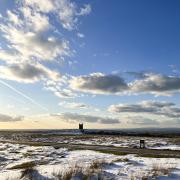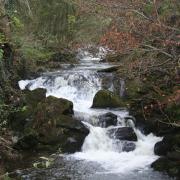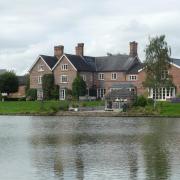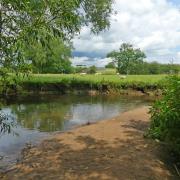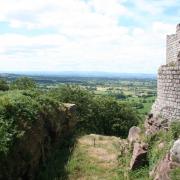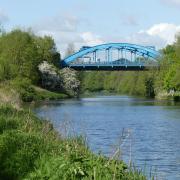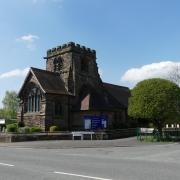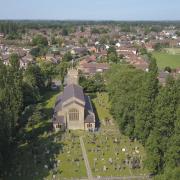James Balme visits Bowdon in search of William Wood
History surrounds us at every turn – from the smallest villages to the largest towns in Cheshire. Scratch under the surface of every town and village and it's surprising what you will find. My recent visit to Bowdon, for example, uncovered some fascinating stories about its people and rich past.
The landscape is dominated by the 90-foot sandstone tower belonging to the Church of St Mary The Virgin, is situated high upon the sandstone ridge that rises above the Cheshire Plain and is crossed by the Roman Road known as Watling Street.
A small community was formed here in Saxon times during the seventh century, possibly by Archbishop Theodore.
An entry in the Domesday book of 1086 mentions that a mill, church and parish priest were present at Bogedone, which means a bow-shaped hill, and held at the time by a Norman officer known as Hamon de Massey.
Although the present church was constructed between 1856 to 1860 the site has been the centre of worship in Bowdon from the earliest times and when the foundations for the current church were laid bare, traces of three earlier churches were found, with the oldest, which was built in stone, dating back to 1100 AD. Before this time, a wooden structure stood on this same site.
The church itself has close links with the Dunham Massey estate and within the church can be found the Stamford Chapel, formerly known as the Dunham Chapel, housing memorials to the Booth and Grey families, both owners of nearby Dunham Massey Hall. It is interesting to note that in the 16th century a separate entrance to the chapel existed, allowing the family privacy. They also had their own door close to the altar allowing them to be the first to receive communion.

The substantial churchyard is full of history too and there is one grave in particular of a great man with a story to tell. William Wood was known as the chimney sweeps' friend and famous for pushing through legislation to help prevent children from being sent up chimneys to clean them when mechanical devices were readily available.
The practice of using small children as chimney sweeps (also known as climbing boys), began following the Great Fire of London in September 1666. It was at this time that the use of boys as young as four years old became commonplace, with the child expected to climb up the chimneys, which in many cases were no more than 18 inches wide. It wasn’t unheard of for their masters to light a fire below to encourage the child to climb more quickly.
William Wood campaigned for legislation to stop this child labour. In 1875, seven years after his death, an amended Chimney Sweepers Act came into force, requiring all chimney sweepers to obtain a certificate of authorisation from the local chief officer of police. William Wood's coffin was carried to the church in Bowdon by six chimney sweeps from five different towns.
My film, In Search of William Wood, shot in Bowdon can be viewed for free with many other local history films by visiting my channel, youtube.com/Tvpresenter4history.
Look out for
The final resting place of William Wood at Bowdon Church
The Stamford Chapel dedicated to the Booth and Grey Families
The churchwarden's chest, circa 1550 AD
The Baggiley (Baguley) effigy of Sir William Baggiley, dated to 14th century








